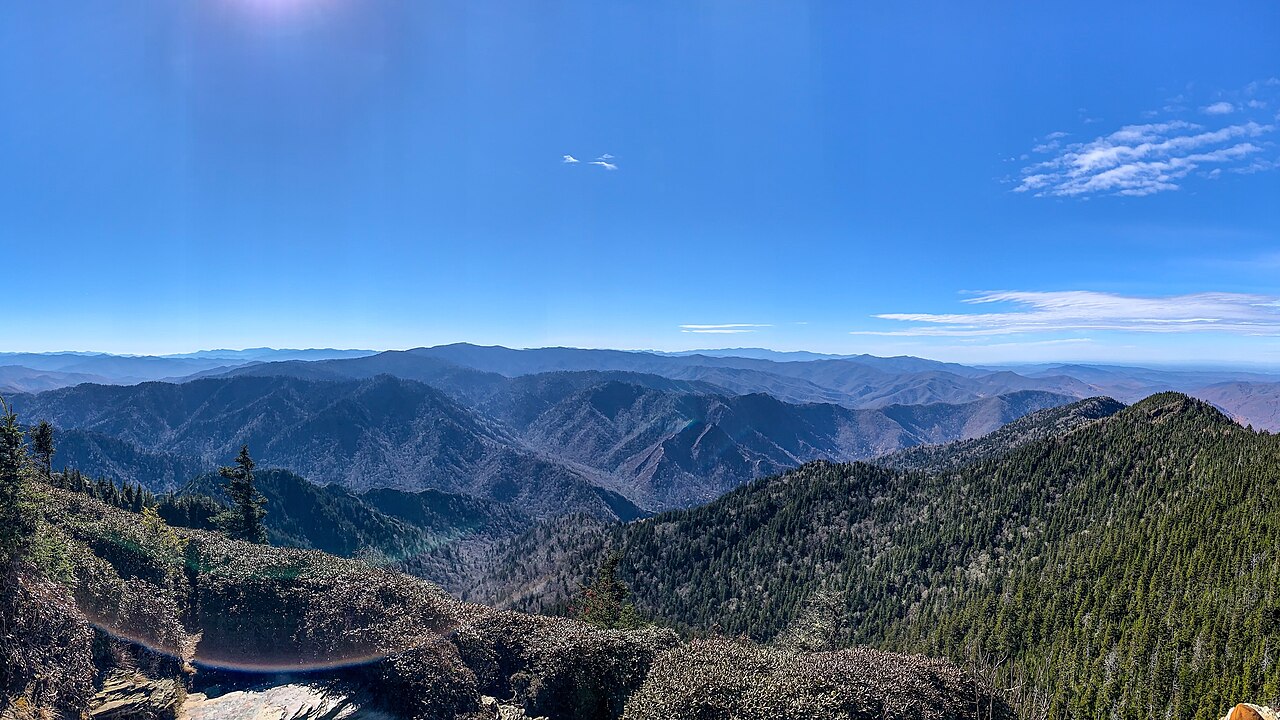Quick Bits:
Great Smoky Mountains National Park straddles the border between North Carolina and Tennessee. It is the most visited national park in the United States. With more than 800 miles of trails and roads, the park teems with waterfalls, wildflowers, wildlife, and relics of Southern Appalachian culture.
Established in 1934, the park spans over half a million acres. It offers an immersive experience in one of the world’s oldest mountain ranges. The park gets its name from the ever-present morning fog that drapes over its peaks, giving a bluish smoky look.
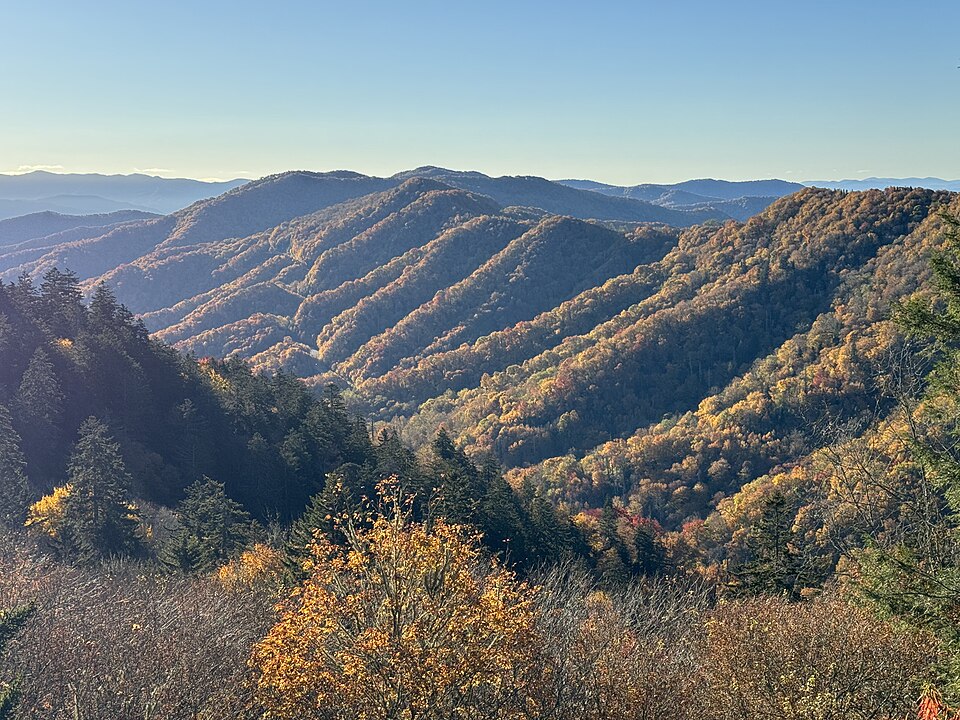
Image by: Missvain – Via Wikipedia
Key Highlights
- Over 12 million visitors annually
-
UNESCO World Heritage Site
-
More than 100 species of native trees
-
65+ mammal species and 200+ bird varieties
-
Scenic drives like Cades Cove and Newfound Gap
-
Over 90 historic structures
-
Synchronous fireflies phenomenon in early summer.
General Information
Location: Southeastern United States
States Covered: North Carolina and Tennessee
Established: June 15, 1934
Size: 522,419 acres
Governing Body: National Park Service
Admission: Free, though parking tags are now required for extended visits
Open: Year-round, 24 hours a day
Nearby Cities: Gatlinburg (TN), Cherokee (NC), Pigeon Forge (TN)
The park’s easy access and free entry attract a diverse range of visitors. Families come for scenic drives. Adventurers chase hidden trails. Wildlife watchers search for bears and elk.
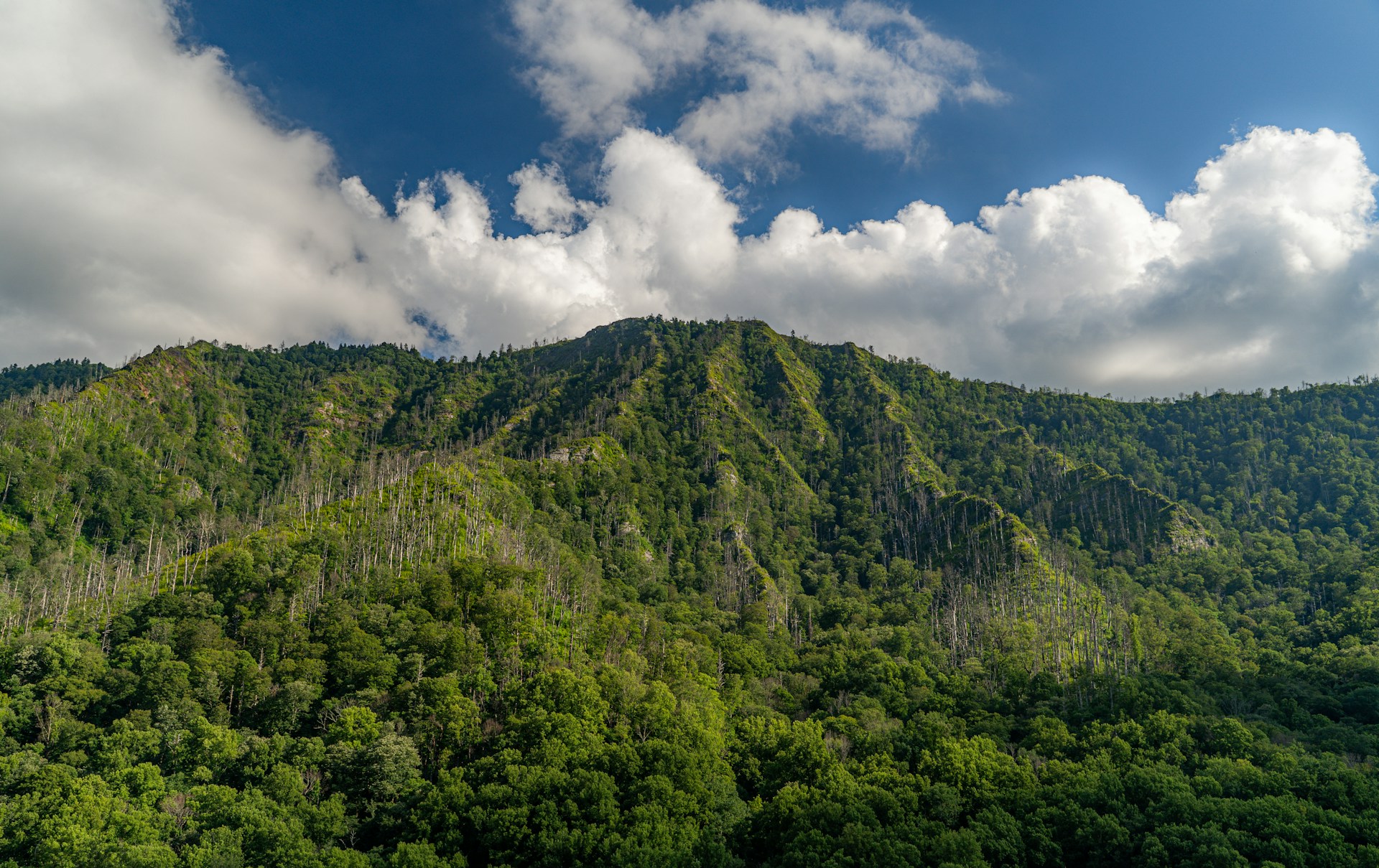
Image by: ATHAN MULLET- Via Unsplash
Geography Information
The Great Smoky Mountains belong to the Blue Ridge section of the Appalachian chain. These ancient hills have been shaped by millions of years of erosion. Peaks here are not the tallest in North America but are rich in character.
Key Geographical Features:
-
Clingmans Dome: Highest point in the park at 6,643 feet
-
Newfound Gap: Pass that offers panoramic views and a key trailhead
-
Mount Le Conte: Iconic summit with a popular backcountry lodge
-
Deep Creek & Big Creek: Lush valleys with rushing waters
-
Ridges and Hollows: Provide microclimates and varied ecosystems
Mist and rainfall sculpt the terrain, creating diverse life zones. Elevations range from 875 to over 6,000 feet. This range packs more biological variety than nearly any other national park.
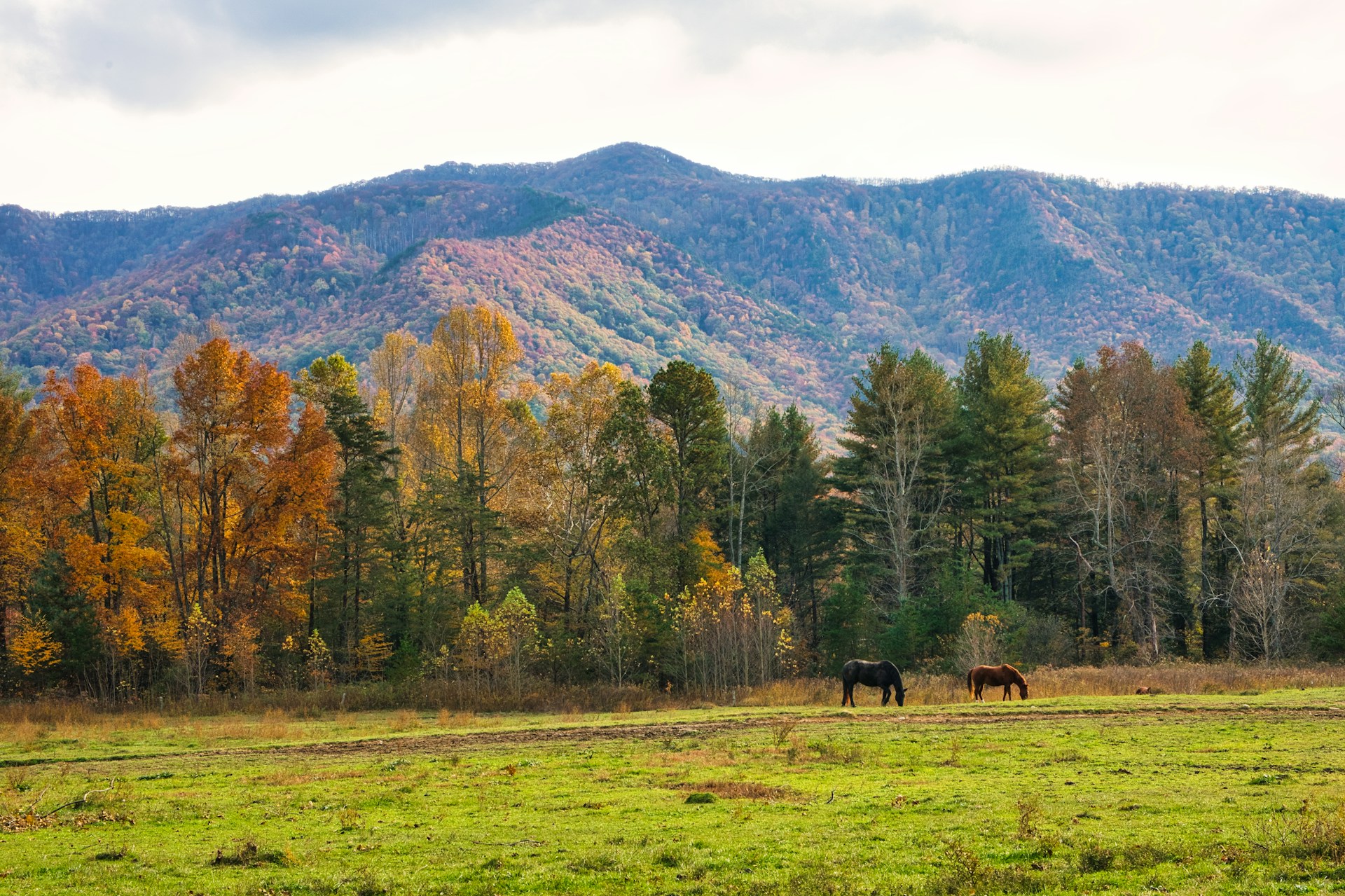
Image by: by David Hertle- Via Unsplash
Places to Visit
The Great Smoky Mountains National Park is packed with must-see destinations. Whether driving or hiking, the park reveals layers of natural and cultural treasures.
Cades Cove
A wide valley surrounded by mountains. Spot deer, black bears, and wild turkeys. The one-way loop road leads through preserved churches, cabins, and mills.
Clingmans Dome
Drive to the summit parking area and walk the short trail to the observation tower. On a clear day, enjoy views spanning 100 miles across seven states.
Roaring Fork Motor Nature Trail
Narrow, winding road that reveals old-growth forests, log cabins, and rushing streams. Includes trailheads for Rainbow Falls and Grotto Falls.
Cataloochee Valley
A quieter side of the park. Elk roam freely. Remnants of old homesteads and schoolhouses give a glimpse into the past.
Laurel Falls Trail
One of the most accessible hikes. Paved path leads to a stunning 80-foot waterfall split into two tiers.
Chimney Tops
Short but steep hike. Rewards with sweeping views of the surrounding peaks and forests.
Appalachian Trail
A portion of this famed long-distance trail runs through the park. Backpackers cross through rugged landscapes, high ridges, and peaceful gaps.

Image by: Michael H- Via Tripadvisor
Yearly Climate
The Great Smoky Mountains experience a wide range of weather. Elevation changes bring drastic differences in temperature and precipitation. Rain falls evenly throughout the year, supporting the park’s lush forests.
| Season | Features |
|---|---|
| Spring | Wildflowers bloom, rivers swell, unpredictable weather |
| Summer | Warm days, misty mornings, dense greenery |
| Autumn | Crisp air, vibrant foliage, high visitor counts |
| Winter | Snow at higher elevations, quiet trails, icy streams |
Average Temperatures:
-
Summer (July): 60–85°F
-
Winter (January): 20–50°F
-
Annual Rainfall: 55–85 inches depending on elevation
Morning fogs and sudden storms are common. Pack layers and waterproof gear regardless of season.
Best Time of Year to Visit
Spring (March to May)
-
Wildflowers and wildlife emerge
-
Mild weather with fewer crowds
-
Best for photographers and nature walks
Summer (June to August)
-
Full bloom in forests and meadows
-
Ideal for families and day trips
-
Occasional thunderstorms and high humidity
Fall (September to early November)
-
Peak foliage draws large crowds
-
Cooler, clearer air and golden landscapes
-
Best for scenic drives and long hikes
Winter (December to February)
-
Peaceful trails and snow-dusted peaks
-
Some roads and facilities may close
-
Great for solitude and crisp mountain views
Top Tip: Late October is peak season for fall colors. Arrive early in the day to avoid traffic.
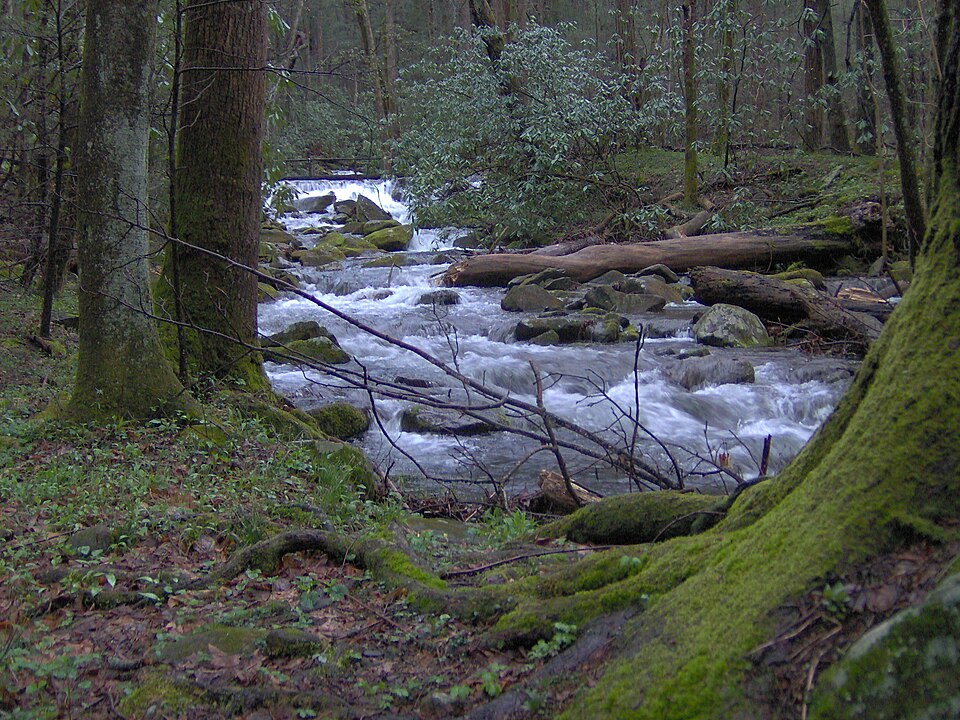
Image by: Brian Stansberry- Via Wikipedia
In Summary…
Great Smoky Mountains National Park is a timeless slice of Appalachian magic. With its fog-draped peaks, cascading waterfalls, and centuries of human history, the park welcomes millions for good reason. It balances accessibility with deep wildness. From black bear sightings in Cades Cove to the awe of synchronous fireflies in Elkmont, each visit brings something unique.
Whether you prefer a scenic drive or a backcountry trek, this park rewards curiosity. Walk the quiet forests where Cherokee once tread. Climb the ridges where mist meets sunrise. Listen to streams whispering old mountain songs.
Come for the views. Stay for the stillness. Return for the wonder.

